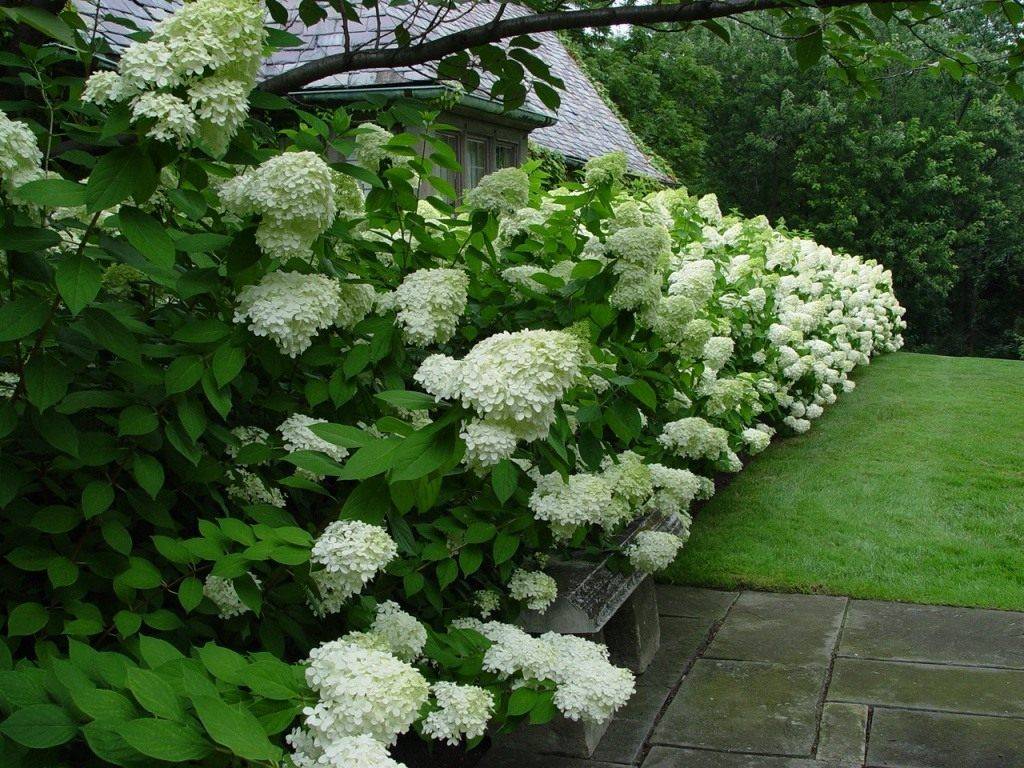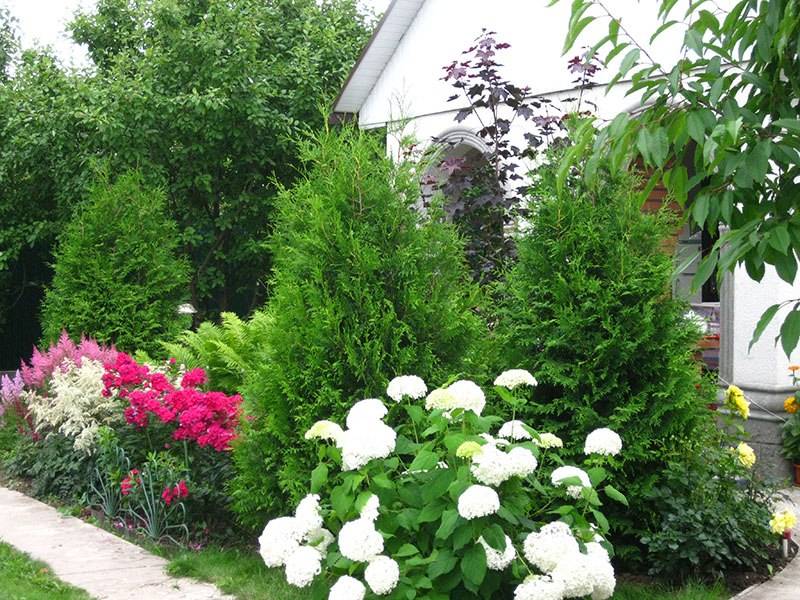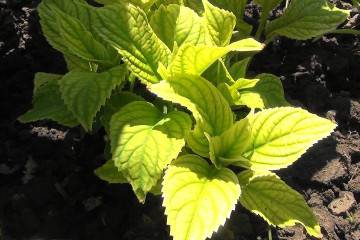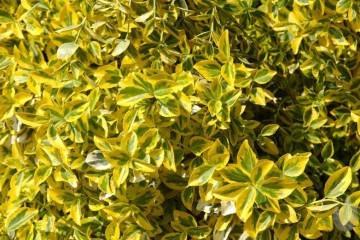Hydrangeas in landscape design - which plants are combined with in a flower bed
Content:
Hydrangeas are often used in landscape design. This plant has spectacular inflorescences and a long flowering period. Due to this, it is often used to decorate garden plots.
Benefits of hydrangeas when used in landscaping
The use of hydrangeas in the landscape design of a summer cottage has many advantages:
- the plant is distinguished by lush and long flowering;
- hydrangea petals can change color during the season;
- the culture is resistant to high humidity and precipitation;
- the plant is characterized by unpretentious care. It can be planted in the shade and in open areas;
- the flower has many varieties that are fast growing;
- inflorescences differ in a variety of shades. They go well with emerald leaves.
Types and varieties of hydrangeas that can be used in garden design
It is no coincidence that hydrangea is used in garden design. Today, many species of this plant are known, each of which has certain characteristics.
Paniculata
Paniculate species are perfect for decorating a garden with hydrangeas. They are large in size and have a rounded crown. The inflorescences are also distinguished by their impressive size and pyramidal shape. The most popular varieties include Unic, Matilda, Grandiflora, Vanilla Fries.
Large-leaved
A flower garden with a large-leaved hydrangea will look very impressive. This plant is remarkable for its extraordinary beauty. At the same time, it cannot boast of good resistance to frost, therefore, even in the Moscow region, the culture is insulated.
When composing compositions with the participation of this type of hydrangea, it must be borne in mind that they bloom only in July and August.
To prevent the plant from dying over the winter, it must be well covered. Potting is also acceptable. Sometimes large-leaved hydrangeas are immediately grown in flowerpots or baskets and transferred to a room for the winter.
Tree-like
This culture is characterized by lush flowering. It is resistant to frost. The bushes are relatively modest in size and rarely grow more than 1.5 m. The rosettes reach 15 cm in diameter. The flowering of the tree hydrangea begins in June and lasts until the very frost. The plant is distinguished by its exactingness to the composition of the soil.
Pereshkovaya
This hydrangea is a vine with many aerial roots. With strict adherence to agrotechnical recommendations, the culture is capable of reaching a height of 10 m. To achieve lush flowering, the bushes should be placed in partial shade.
Dubolistnaya
The leaves of this plant resemble oak. It is a shrub with paniculate inflorescences 10-30 cm in size. This variety is characterized by white flowers 3 cm in size. At the stage of flowering, they turn purple. Flowering lasts in June-July, then seed boxes are formed.
What plants are hydrangea combined with in landscape design
Many gardeners are interested in what the hydrangea is combined with in the garden. In fact, there are many interesting options that help decorate the cottage.
With conifers
The culture looks great with different conifers that act as a background. Small dwarf thujas or pines, on the contrary, are planted in the foreground.
With hosts
Hydrangeas in a flowerbed look good with contrasting hosts. These perennials can be planted side by side. Thanks to this neighborhood, spectacular compositions with hydrangea will be created.
With roses
An excellent option would be a combination with climbing roses. Treelike and large-leaved crops look great with compact rose bushes.
With barberry
The combination with this shrub helps create spectacular mixborders and flower beds. In this case, the paniculate variety will be the best option. It is best to choose pink, blue and white inflorescences.
Flower bed schemes with hydrangeas
To create a harmonious composition, you can use the following options:
- one-sided flower garden. In its frame, you can arrange herbaceous perennials;
- double-sided flower bed. It can be decorated with astilba, host, badan;
- extensive composition. The composition may contain thuja, juniper, barberry.
The choice of the arrangement of the composition components is of no small importance. It depends on their size and color.
The best places to arrange compositions with hydrangeas
There are quite a few options for creating interesting compositions involving a flower.
Parade zone
For flower beds, which are located in the center of the garden area, high varieties of hydrangeas are perfect. They will help fill in the empty space.
Lawn
Neatly trimmed grass goes well with single bushes. In this case, you need to choose compact varieties of hydrangeas that can grow in the sun.
Near the reservoir
The culture grows well near water, so it can be used to decorate water bodies. In this case, you need to protect the flower from moisture stagnation. Irises are good additions. You can also plant willow, juniper.
Along a fence or wall
The flower grows well near fences. It is protected from direct sunlight and gusts of wind. From additions, conifers and hosts are suitable. Different types of ferns will look good.
Flower garden
As part of a flower garden, the culture can be combined with bulbous crops - tulips or crocuses. It can also be combined with annuals - dahlias, marigolds.
Hydrangea looks great in the landscape. This plant fits perfectly into a wide variety of compositions and blends well with other plants, helping to create an interesting site design.




















